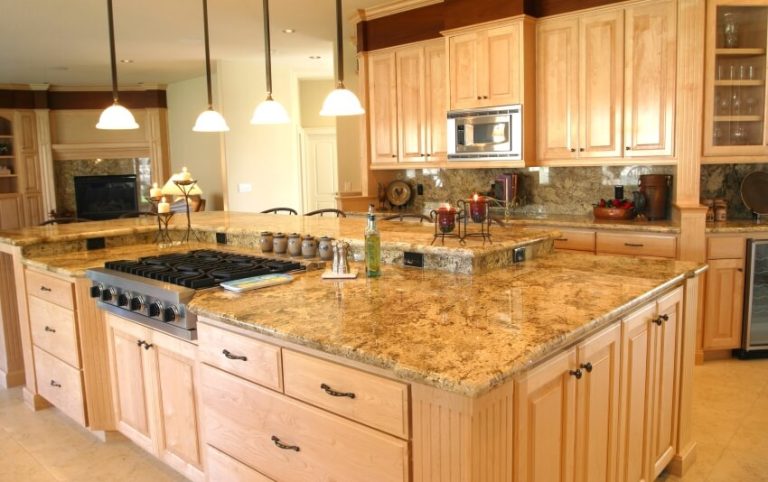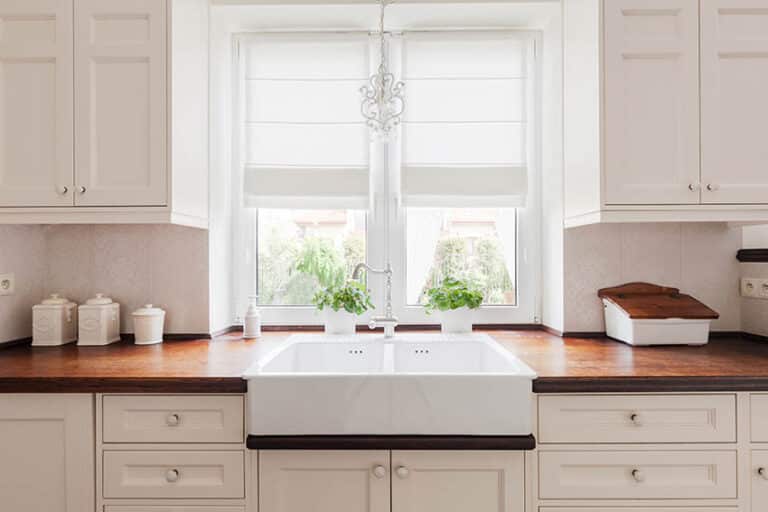How Does an Apron Sink vs Farmhouse Sink Compare?
In most cases, the apron and the farmhouse sink are extremely similar. Why would it have two different names then you may ask? This is a marketing strategy. By changing the name from a farmhouse to an apron sink it no longer limits these types to just being used in farmhouse-style homes.
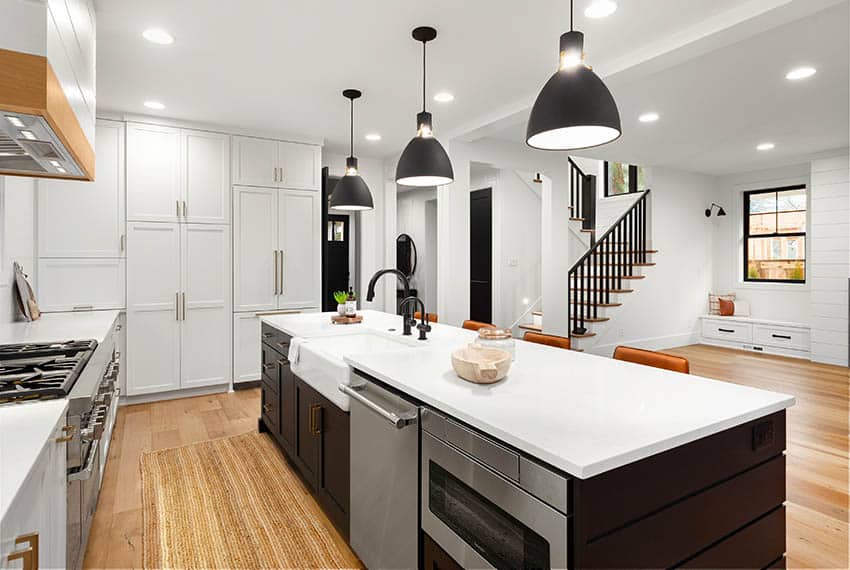
After the name change came into place, the apron sink then evolved into a completely new type with different features and materials that are used. This is to make it more versatile in other styles of kitchen, while farmhouse takes the cake on any farmhouse style kitchen.
One of the best features of both the apron and farmhouse sinks is that the entire point is to save the countertops from water damage. These sinks do it in slightly different ways; the farmhouse style is freestanding, away from the countertops, and the apron design cuts away the most vulnerable section of the countertop. This is a huge advantage when using natural stone or other naturally porous materials on countertops.
Difference Between a Farmhouse and an Apron Sink?
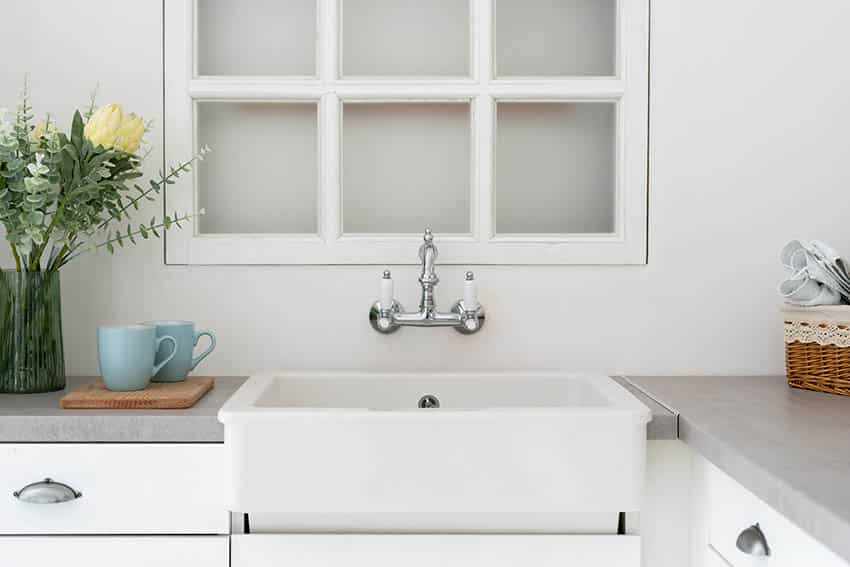
Farmhouse kitchen sinks are meant to be extremely functional. This led to the sinks often having multiple bowls in one unit, as well as a drying area that drains to the basin. See more pictures of double basin kitchen sinks here.
They also have a large backsplash and rim around it to keep all the water in the basin area, instead of on the floor. The entire basin is made from one big piece of material, typically enameled cast iron. By being one large piece, it avoids any seams that could collect water or harbor germs.
With all these features, these sinks were often so large that they were their own entity and not necessarily attached to the countertop. They could be attached, but this was often not the case, as it was better for the smaller kitchens to have them separate.
In some extremely small kitchens, a basin vanity could also be added in a separate room, but this was only in old extremely traditional, often more upscale types of homes.
Sink Size Differences
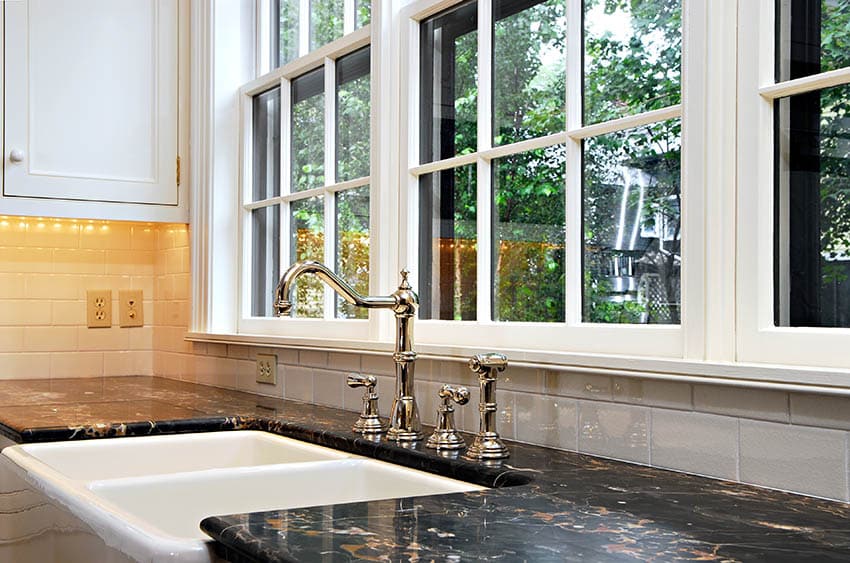
Farmhouse sinks are often extremely large, heavy-duty, and quite heavy. This is the older, more traditional type of farmhouse basin. On the contrary, apron sinks are a much more modern and flexible version of the above-mentioned type.
Apron sinks are typically much smaller than the farmhouse basin and can be placed in a countertop arrangement, instead of needing to be its own entity. They also can nix the backsplashes and the drying area to shrink its size a little. After all this modernization, the apron design came to be average-sized, with a one to two-bowl basin design.
What Makes An Apron Style Different From a Standard Sink?
Now, what makes an apron-style basin different than any standard sink that could be used in a kitchen? The way this basin is placed into the counter is the most enticing and unique factor of the apron design.
A standard sink is frequently dropped into a hole in the countertop, so you can only see the top of the basin. An apron sink cuts that front section of the countertop as well, so when the basin is placed, you can see its entire front and top.
This is helpful if the countertop you have is not particularly good with water because then you have less of a chance of ruining it.
Apron vs Farmhouse Sink Material Differences

As mentioned above, farmhouse sinks are often made from enameled cast iron and sometimes even fire clay. This looks like the old-time farmhouse and the traditional aesthetic that the style exudes. This is one of the limiting factors of farmhouse sinks since their appeal is often in the traditional materials and design. Nowadays, however, these can be made from different materials if the desired look can still be achieved.
The apron basin, again a more modern, versatile form of the farmhouse style, is commonly made from materials such as stainless steel, granite composite, and sometimes even copper, depending on the desired aesthetic.
The material selection on an apron sink is a great deal more flexible as it does not need to express the aesthetic of age and tradition. It can be slipped into any design style one desires by coordinating the materials with the other elements in the space.
For another related article, visit our faucets for the kitchen guide.


